From inside (document excerpt):
ST724 1.1996 Spare Parts Piéces Dètachées Owner’s Manual 601 00 17-36 Reference No. 337209 05/09/95 SAFETY RULES ALWAYS DISCONNECT SPARK PLUG WIRE AND PLACE WIRE WHERE IT CANNOT CONTACT SPARK PLUG TO PREVENT ACCIDENTAL STARTING WHEN SETTING-UP, TRANSPORTING, ADJUSTING OR MAKING REPAIRS. IMPORTANT SAFETY STANDARDS REQUIRE OPERATOR PRESENCE CONTROLS TO MINIMIZE THE RISK OF INJURY. YOUR SNOW THROWER IS EQUIPPED WITH SUCH CONTROLS. DO NOT ATTEMPT TO DEFEAT THE FUNCTION OF THE OPERATOR PRESENCE CONTROL UNDER ANY CIRCUMSTANCES.
Snow Blower and Snow Thrower User Manual Free Download. Snow Removal Manual. Free Manual Download PDF.
BEFORE USE q Read the Owner’s Manual carefully. Be thoroughly familiar with the controls and the proper use of the snow thrower. Know how to stop the snow thrower and disengage the controls quickly. q Do not operate the snow thrower without wearing adequate winter outer garments. Wear footwear that will improve footing on slippery surfaces. Keep the area of operation clear of all persons, particularly small children, and pets. Thoroughly inspect the area where the snow thrower is to be used and remove all doormats, sleds, boards, wires, and other foreign objects. Use extension cords and receptacles as specified by the manufacturer for all snow throwers with electric drive motors or with factory-installed or optional starting motors. Use only attachments and accessories approved by the manufacturer of the snow thrower (such as electric starter kits, etc.). Never operate the snow thrower without good visibility or light. Always be sure of your footing, and keep a firm hold on the handles. Walk; never run. This snow thrower is for use on sidewalks, driveways, and other ground level surfaces. Do not attempt to clear on steep sloping surfaces. DO NOT USE SNOW THROWER ON SURFACES ABOVE GROUND LEVEL such as roofs of residences, garages, porches or other such structures or buildings. Check all bolts at frequent intervals for proper tightness to be sure the snow thrower is in safe working condition. Disengage clutch and shift into neutral before starting the engine. Let engine and snow thrower adjust to outdoor temperatures before starting to clear snow. q q OPERATING SAFETY q q q Do not put hands or feet near or under rotating parts. Keep clear of the discharge opening at all times. Never operate the snow thrower without proper guards, plates or other safety protective devices in place. Never allow children or young teenagers to operate the snow thrower and keep them away while it is operating. never allow adults to operate the snow thrower without proper instruction. Always wear safety glasses or eye shields during operation or while performing an adjustment or repair to protect eyes from foreign objects that may be thrown from the snow thrower. Exercise extreme caution when operating on or crossing gravel drives, walks, or roads. Stay alert for hidden hazards or traffic. Exercise caution to avoid slipping or falling, especially when operating in reverse or backing up. Do not clear snow across the face of slopes. Exercise caution when changing direction on slopes. Do not attempt to clear steep slopes. Never operate the snow thrower without proper guards, plates or other safety protective devices in place. Never operate the snow thrower near glass enclosures, automobiles, window wells, drop-offs, and the like without proper adjustment of the snow discharge angle. Keep children and pets away. Never operate the snow thrower at high transport speeds on slippery surfaces. Look behind and use care when backing. Do not run the engine indoors, except when starting the engine and for transporting the snow thrower in or out of the building. Open the outside doors; exhaust fumes are dangerous (containing CARBON MONOXIDE, an ODORLESS and DEADLY GAS). Take all possible precautions when leaving the snow thrower unattended. Disengage the auger/impeller, stop engine, and remove key. Do not overload the machine capacity by attempting to clear snow at too fast a rate. Never direct discharge at bystanders or allow anyone in front of the unit. q q q q q q q q q q q q q q q q FUEL SAFETY q Handle fuel with care; it is highly flammable. q q Use an approved fuel container. Check fuel supply before each use, allowing space for expansion as the heat of the engine and/or sun can cause fuel to expand. Fill fuel tank outdoors with extreme care. Never fill fuel tank indoors. Replace fuel tank cap securely and wipe up spilled fuel. Never remove fuel tank cap or add fuel to a running engine or hot engine. Never store fuel or snow thrower with fuel in the tank inside a building where fumes may reach an open flame or spark. q q q q q q 2 SAFETY RULES SAFE STORAGE q Always refer to Owner’s Manual instructions for important details if the snow thrower is to be stored for an extended period. q q Disengage power to the auger/impeller when snow thrower is transported or not in use. Never store the snow thrower with fuel in the fuel tank inside a building where ignition sources are present such as hot water and space heaters, clothes dryers, and the like. Allow the engine to cool before storing in any enclosure. q q STOP THE ENGINE (OR ELECTRIC MOTOR) WHENEVER YOU LEAVE THE OPERATING POSITION, BEFORE UNCLOGGING THE AUGER/IMPELLER HOUSING OR DISCHARGE GUIDE, AND WHEN MAKING ANY REPAIRS, ADJUSTMENTS, OR INSPECTIONS. REMOVE WIRE FROM SPARK PLUG OR DISCONNECT CORD FROM ELECTRIC MOTOR.
Wikipedia’s page for Husqvarna
Publisher: www.husqvarna.com


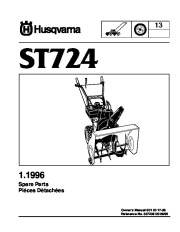 Husqvarna ST724 Snow Blower Owners Manual - Enlarge page 1 of 40
Husqvarna ST724 Snow Blower Owners Manual - Enlarge page 1 of 40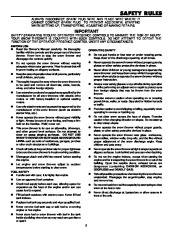 2 of 40
2 of 40 3 of 40
3 of 40 4 of 40
4 of 40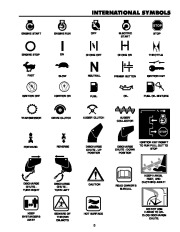 5 of 40
5 of 40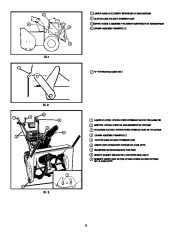 6 of 40
6 of 40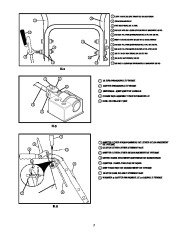 7 of 40
7 of 40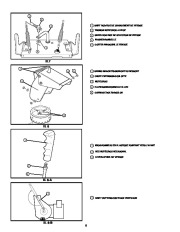 8 of 40
8 of 40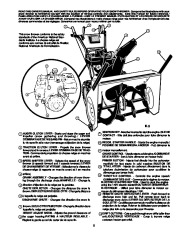 9 of 40
9 of 40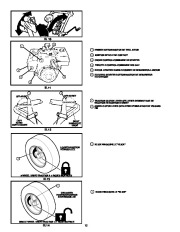 10 of 40
10 of 40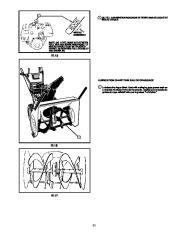 11 of 40
11 of 40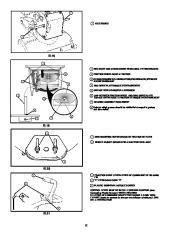 12 of 40
12 of 40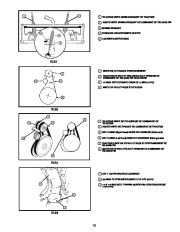 13 of 40
13 of 40 14 of 40
14 of 40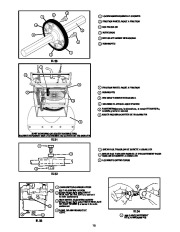 15 of 40
15 of 40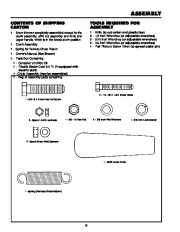 16 of 40
16 of 40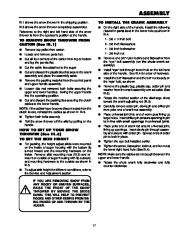 17 of 40
17 of 40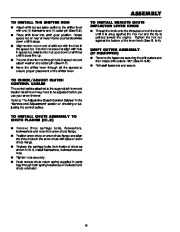 18 of 40
18 of 40 19 of 40
19 of 40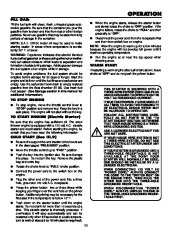 20 of 40
20 of 40 21 of 40
21 of 40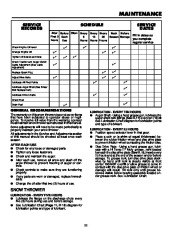 22 of 40
22 of 40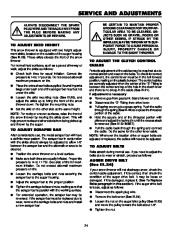 23 of 40
23 of 40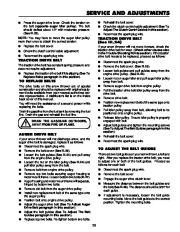 24 of 40
24 of 40 25 of 40
25 of 40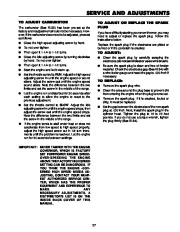 26 of 40
26 of 40 27 of 40
27 of 40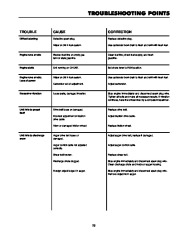 28 of 40
28 of 40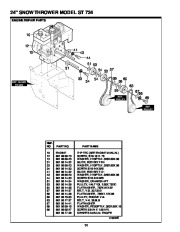 29 of 40
29 of 40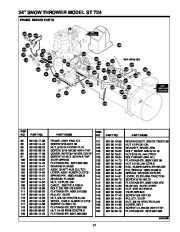 30 of 40
30 of 40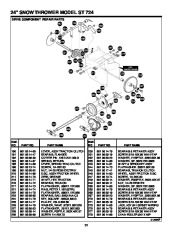 31 of 40
31 of 40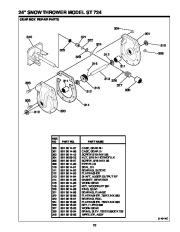 32 of 40
32 of 40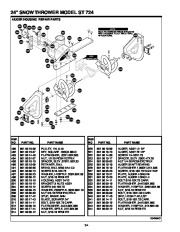 33 of 40
33 of 40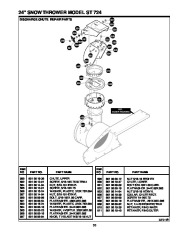 34 of 40
34 of 40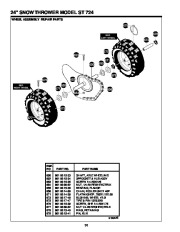 35 of 40
35 of 40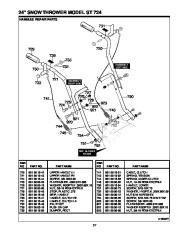 36 of 40
36 of 40 37 of 40
37 of 40 38 of 40
38 of 40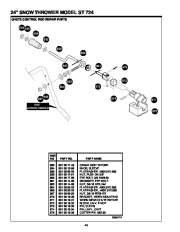 39 of 40
39 of 40 40 of 40
40 of 40